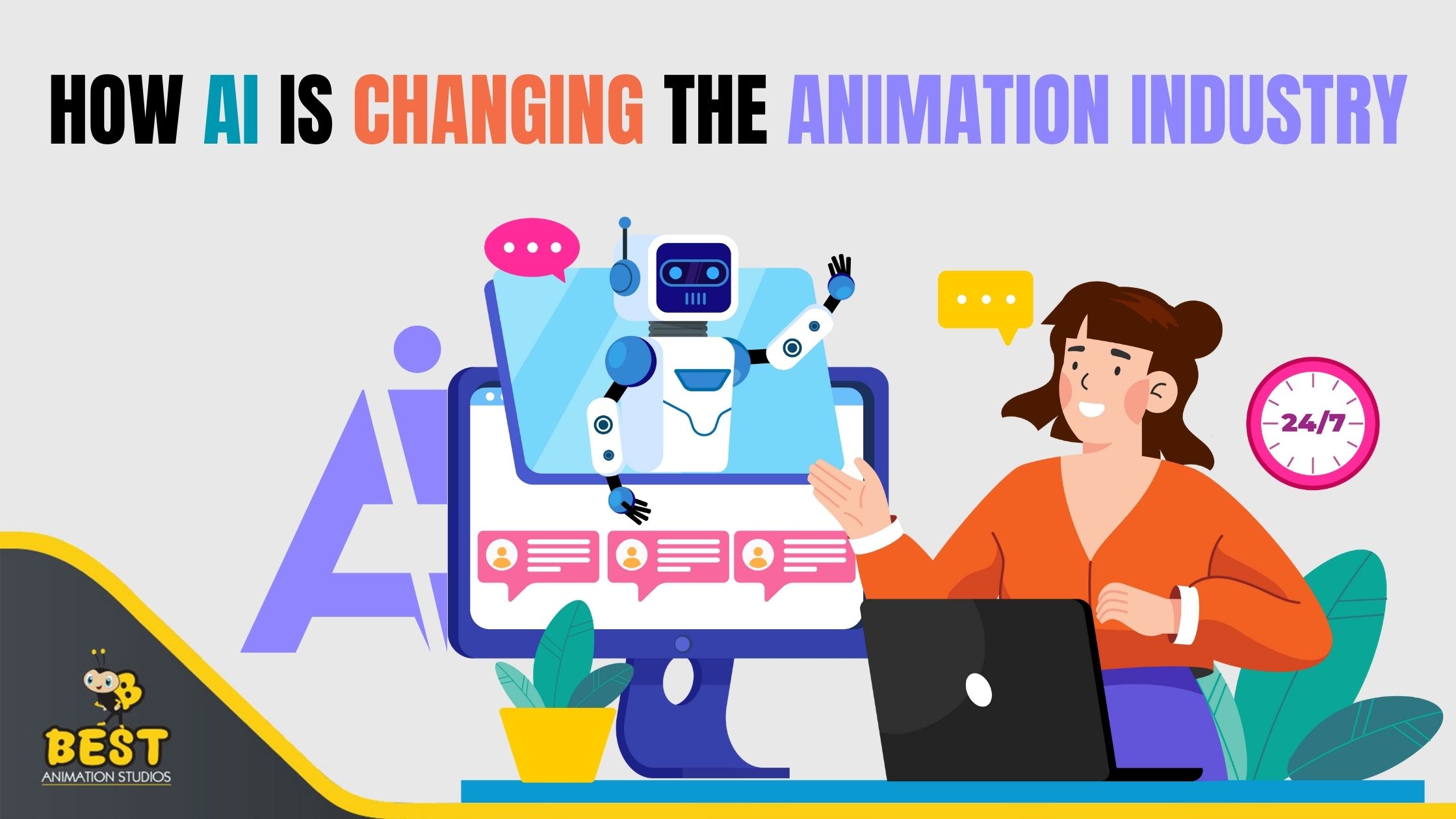
The animation industry has witnessed transformative changes over the past few years, primarily driven by the advent of Artificial Intelligence (AI). This revolutionary technology is changing the landscape of animation, enabling creators to push the boundaries of what is possible in visual storytelling. With advancements in machine learning, deep learning, and data analytics, AI tools are becoming increasingly sophisticated, allowing for a more streamlined and efficient production process.
This blog will explore the profound impact of AI on animation, examining the benefits it has brought, the challenges it poses, and the potential future trends shaping this vibrant sector.
Revolutionizing Animation Techniques
AI has fundamentally altered the tools and methods utilized in animation production. Advanced algorithms and machine learning techniques allow animators to create stunning visuals more efficiently.⦁ Automation of Routine Tasks:
AI can automate repetitive tasks like in-betweening, which involves creating frames between keyframes. This automation greatly accelerates the animation process.
⦁ Enhanced Visual Effects:
AI-driven software can simulate complex natural phenomena like fire, water, and weather patterns with stunning realism, reducing the need for extensive manual work by artists.
Improved Character Animation
Character animation has greatly benefited from AI technologies, making creating fluid and lifelike movements easier.⦁ Realistic Motion Capture: AI-enhanced motion capture systems can analyze human movements more accurately, allowing for highly realistic character animations.
⦁ Emotion Recognition: Using AI algorithms that analyze facial expressions, animators can design characters that respond emotionally to different scenarios, enhancing storytelling and viewer engagement.
Cost Efficiency and Time Savings
One of the most significant advantages of incorporating AI into animation is reducing production time and costs.
⦁ Resource Allocation: With AI handling time-consuming tasks, animators can devote more time to creative aspects such as story development and character design, ultimately enhancing the quality of the final product.⦁ Lower Overhead Costs: Automated processes reduce the need for extensive staffing, allowing studios to operate more efficiently and economically without compromising quality.
Challenges of AI Integration
Despite the benefits, integrating AI into the animation industry has challenges.
⦁ Job Displacement: As AI tools increasingly automate various tasks traditionally performed by human animators, concerns arise regarding job security within the industry.⦁ Quality Control: While AI can enhance efficiency, it sometimes struggles to replicate the nuanced artistic judgment of experienced animators, potentially impacting the quality of the final product if not supervised adequately.
Ethical Considerations
The rise of AI in animation also brings ethical dilemmas that need careful consideration.
⦁ Authenticity and Authors' Rights: AI-generated content raises questions about ownership and copyright, particularly when AI is used to mimic a specific artist's style or creative elements.⦁ Cultural Sensitivity: AI algorithms must be designed to recognize and respect cultural nuances to avoid perpetuating stereotypes or inaccuracies in representation.
Future Trends in AI Animation
Looking ahead, several trends are expected to influence the trajectory of AI in animation.
⦁ Generative AI: The emergence of generative adversarial networks (GANs) will enable creators to produce unique visuals and animations by training machines on extensive datasets, giving rise to unprecedented innovations in design.⦁ Interactive Animation: As AI advances, the potential for creating interactive, viewer-driven narratives in animation will grow, enabling audiences to influence the storyline in real time.
Conclusion
AI is undoubtedly reshaping the animation industry, offering remarkable opportunities for innovation, efficiency, and creativity. While the integration of AI presents certain challenges and ethical considerations, its overall impact propels the industry forward, ushering in a new era of animated storytelling. As we embrace these technological advancements, ongoing dialogue and adaptation will be essential to balance innovation with artistic integrity and human creativity.In the ever-evolving landscape of animation, one thing is clear: the synergy between human artistry and AI technology will continue to redefine what is possible in visual storytelling.